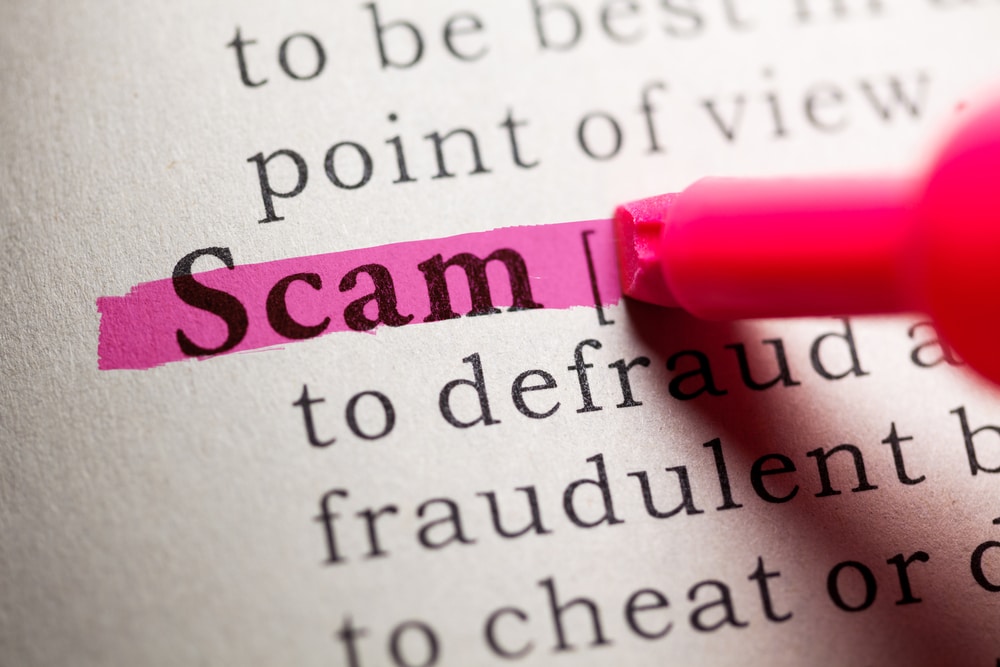How Credit Repair Works—and What It Can (and Can’t) Fix
If your credit score is dragging you down, you’re not alone. Millions of people are dealing with negative items on their credit reports that are hurting their ability to get approved for loans, credit cards, or even rental housing.
Credit repair is the process of cleaning up your credit reports by disputing errors and removing inaccurate or outdated information. It’s not magic, and it’s not a quick fix—but it can help if your credit is suffering because of mistakes or old accounts that should no longer be there.

People who benefit the most from credit repair often have collections, charge-offs, late payments, or accounts that don’t belong to them. In some cases, it’s the result of identity theft. Other times, it’s just outdated or misreported data.
It’s important to know what credit repair can and can’t do. It can help you fix errors and improve your credit reports. But it can’t remove accurate negative information or erase your credit history. It’s a tool—not a reset button.
What Is Credit Repair?
Credit repair is the process of identifying and disputing inaccurate or unfair information on your credit reports. This can include accounts that don’t belong to you, balances that are wrong, or items that should have aged off but are still showing up.
Fixing Errors vs. Rebuilding Credit
Credit repair focuses on correcting problems. It’s not the same as building credit from scratch or improving your credit score through better financial habits. That’s where consistent on-time payments, low credit card balances, and responsible credit use come in. Repair addresses the past—rebuilding strengthens the future.
Who Can Benefit From Credit Repair?
Credit repair makes the most sense for people dealing with specific credit report issues. These include:
- Identity theft: Accounts or hard inquiries that you didn’t authorize.
- Outdated accounts: Debts older than seven years that should no longer be reported.
- Incorrect balances or statuses: For example, an account marked as delinquent even though it’s current.
- Duplicate reporting: The same debt showing up more than once.
If any of these apply to your credit reports, taking action to clean them up can lead to real improvements in your credit score.
How the Credit Repair Process Works
Credit repair isn’t complicated, but it does follow a step-by-step process. You’ll need to pull your credit reports, spot the errors, file disputes, and then follow up until the corrections are made.
Step 1: Get Your Credit Reports
Start by requesting your credit reports from all three credit bureaus—Equifax, Experian, and TransUnion. You can get them for free at AnnualCreditReport.com. Don’t just check one. Each credit bureau may report different information, and a mistake on one credit report can hurt your credit score just as much as an error on all three.
Step 2: Review Reports for Inaccuracies
Look through your credit reports carefully. Focus on anything that seems off or unfamiliar. You’re checking for:
- Accounts you don’t recognize – These could be signs of identity theft.
- Wrong balances or payment statuses – For example, a loan marked late even though it was paid on time.
- Duplicate listings – The same account reported more than once.
- Incorrect personal details – Misspelled names, old addresses, or wrong Social Security numbers.
Even small mistakes can drag down your credit score, so it’s worth being thorough.
Step 3: Dispute Inaccurate Information
Once you’ve identified the errors, you can file disputes directly with the credit bureaus. You have three options: online, by mail, or by phone. While online disputes are the fastest, we don’t recommend them.
Disputing by mail gives you more control over what you submit, allows you to include supporting documentation, and creates a paper trail that can be helpful if you need to escalate your case later. Online platforms often limit how much you can explain, and they may waive certain consumer protections once you accept their terms.
Stick with certified mail whenever possible. Include a detailed explanation of the error in your dispute letter, copies of any proof you have, and a copy of the credit report with the item highlighted.
Once your dispute is submitted, the credit bureau has 30 days to investigate. They’ll contact the company that reported the information and decide whether to update or remove it.
Step 4: Follow Up and Track Results
You should receive a response from the credit bureau within 30 to 45 days. If the item is corrected or removed, you’ll be sent an updated credit report.
If the credit bureau doesn’t make changes, and you still believe the information is incorrect, don’t give up. You can provide more evidence, add a statement of dispute to your credit report, or file a complaint with the Consumer Financial Protection Bureau.
Do-It-Yourself vs. Hiring a Credit Repair Company
You can repair your credit on your own, or you can hire a professional service to do it for you. Each option has its pros and cons depending on your situation.
DIY Credit Repair: Pros and Cons
Doing it yourself gives you complete control and costs nothing but your time.
- Pros: It’s free. You’ll learn more about your credit reports and how they work.
- Cons: You’ll need to research the process, track disputes, and keep organized records. It can take time and persistence to get results.
Working With a Credit Repair Company
Some people prefer to hire a credit repair company to handle the disputes and follow-ups. These companies will review your credit reports, identify potential errors, and submit disputes on your behalf. Some also offer tools like credit monitoring and score tracking.
Expect to pay between $50 and $150 per month, depending on the service. But be careful—credit repair is a heavily regulated industry, and there are plenty of shady operators.
Watch out for these warning signs:
- Promises to remove accurate negative items
- Demands for upfront payments
- No written contract or cancellation option
If something sounds too good to be true—like guaranteed credit score boosts or overnight results—it probably is.
What Credit Repair Can—and Can’t—Fix
Credit repair is effective when there are legitimate mistakes on your credit reports. But it’s not a catch-all solution. Some negative items can be removed through the dispute process. Others are legally required to stay on your credit reports for a set period.
What You Can Dispute and Remove
You have the right to challenge any item on your credit reports that is incorrect, incomplete, or can’t be verified. This includes:
- Accounts that aren’t yours
- Debts that are too old to report
- Duplicate entries
- Wrong balances or statuses
Removing inaccurate information can raise your credit score and improve your chances of getting approved for new credit.
What You Can’t Remove If It’s Accurate
If the information is legitimate—even if it hurts your credit—it will stay on your credit report for several years. These include:
- Missed payments
- Repossessions
- Charge-offs
- Bankruptcies
You can’t erase these items unless they’re reported incorrectly. But you can start adding new positive information to outweigh the damage over time.
How Long Does Credit Repair Take?
Credit repair is not instant. In most cases, it takes 30 to 90 days for each dispute to be investigated and resolved. That’s the standard window the credit bureaus have to respond after receiving your dispute.
Some issues can be cleared up faster—especially if the error is obvious and well-documented. Others may take longer if the furnisher doesn’t respond promptly or if additional information is needed.
The process can also stretch out if you have multiple disputes or need to escalate to the Consumer Financial Protection Bureau. Patience and follow-through are key.
Will Credit Repair Improve Your Credit Score?
Credit repair can improve your credit score—but there’s no guarantee. The results depend entirely on what’s actually removed from your credit reports.
If you successfully dispute and delete a major error—like a collection account or a late payment—that can give your score a noticeable boost. But if the item you remove is minor or your credit reports still show other negative marks, the impact may be small.
Also, keep in mind that your credit score may temporarily dip while a dispute is in process. That’s normal and usually corrects itself once the dispute is resolved.
For the best long-term results, pair credit repair with positive credit habits. Removing errors fixes the past, but building new credit is what moves your credit score forward.
Credit Repair Alternatives
Not everyone needs credit repair. If your credit reports are accurate, and you’re still struggling with debt or low credit scores, there are other paths worth exploring.
Credit Counseling
Non-profit credit counseling agencies offer free or low-cost help. They’ll review your financial situation, explain your options, and help you create a plan to manage your debt and improve your credit. This is a good place to start if you feel overwhelmed.
Debt Management Plans (DMPs)
A debt management plan is a structured repayment program arranged through a credit counseling agency. It helps you pay off unsecured debt—like credit cards—by consolidating payments and possibly lowering interest rates. Your accounts stay open, but you make one monthly payment through the agency.
DMPs aren’t credit repair tools, but they can help stop the bleeding and rebuild over time.
Bankruptcy as a Last Resort
Bankruptcy won’t fix your credit reports, but it can offer relief if you’re buried in debt with no way out. It’s a legal reset—not a strategy to raise your credit score—but sometimes it’s the best option available.
If you’re considering bankruptcy, speak with a qualified attorney who can explain how it would affect your specific situation.
Tips to Build Credit While Repairing It
Whether you’re disputing errors or not, rebuilding your credit is just as important. These strategies help add positive information to your credit reports:
- Pay all bills on time – Payment history is the biggest factor in your credit score.
- Keep credit utilization low – Try to use less than 30% of your credit limits.
- Consider secured credit cards or credit-builder loans – These tools are designed for people working to improve their credit and can help establish positive credit history.
The more consistent you are, the faster you’ll start seeing real progress.
See also: How to Use a Secured Credit Card to Build Credit
Your Rights Under the Fair Credit Reporting Act (FCRA)
The credit repair process is backed by federal law—specifically, the Fair Credit Reporting Act (FCRA). This law gives you the right to:
- Access your credit reports for free once every 12 months from each credit bureau
- Dispute inaccurate, incomplete, or outdated information
- Receive a response from the credit bureau within 30 days
- Have unverifiable information corrected or deleted
The FCRA is the reason credit repair exists in the first place. Credit bureaus and creditors are legally required to maintain accurate and fair reporting. If they can’t verify an item or fail to respond within the required time, they must remove it from your report.
Final Thoughts
Credit repair makes sense if your credit reports contain real errors or outdated information. Fixing those mistakes can open the door to better rates, easier approvals, and more financial flexibility.
If you’re comfortable doing the work yourself, start with free credit reports and tackle the disputes on your own. If you're short on time or overwhelmed, hiring a reputable company may be worth it—just avoid the scams.
No matter how you approach it, the first step is always the same: check your credit reports, find the issues, and take action.



